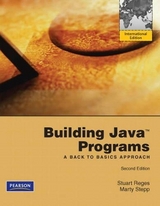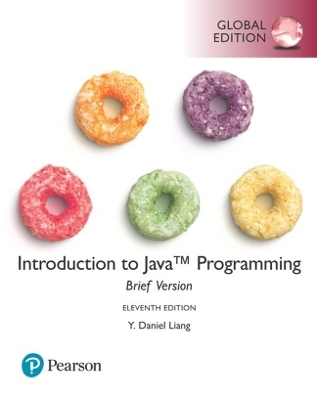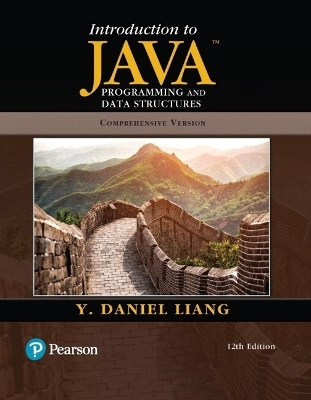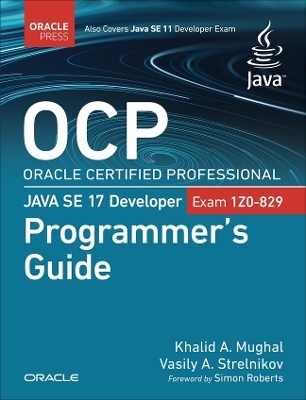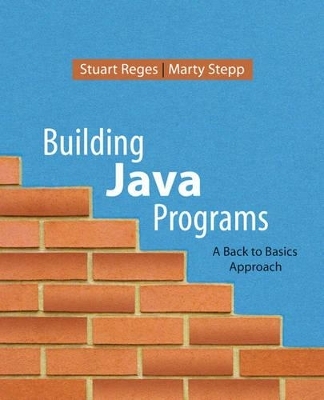
Building Java Programs
Pearson
978-0-321-38283-2 (ISBN)
- Titel erscheint in neuer Auflage
- Artikel merken
Chapter 1: Introduction to Java Programming
1.1 Basic Computing Concepts
1.2 And Now—Java
1.3 Program Errors
1.4 Procedural Decomposition
1.5 Case Study: DrawFigures
Chapter 2: Primitive Data and Definite Loops
2.1 Basic Data Concepts
2.2 Variables
2.3 The for Loop
2.4 Managing Complexity
2.5 Case Study: A Complex Figure
Chapter 3: Introduction to Parameters and Objects
3.1 Parameters
3.2 Methods That Return Values
3.3 Using Objects
3.4 Interactive Programs
3.5 Case Study: Projectile Trajectory
Chapter3G: Graphics (Optional)
3G.1 Introduction to Graphics
3G.2 Procedural Decomposition with Graphics
3G.3 Case Study: Pyramids
Chapter 4: Conditional Execution
4.1 Loop Techniques
4.2 if/else Statements
4.3 Subtleties of Conditional Execution
4.4 Text Processing
4.5 Methods with Conditional Execution
4.6 Case Study: Body Mass Index
Chapter 5: Program Logic and Indefinite Loops
5.1 The while Loop
5.2 The boolean Type
5.3 User Errors
5.4 Indefinite Loop Variations
5.5 Assertions and Program Logic
5.6 Case Study: NumberGuess
Chapter 6: File Processing
6.1 File-Reading Basics
6.2 Details of Token-Based Processing
6.3 Line-Based Processing
6.4 Advanced File Processing
6.5 Case Study: Weighted GPA
Chapter 7: Arrays
7.1 Array Basics
7.2 Array-Traversal Algorithms
7.3 Advanced Array Techniques
7.4 Multidimensional Arrays (Optional)
7.5 Case Study: Hours Worked
Chapter 8: Classes
8.1 Object-Oriented Programming Concepts
8.2 Object State: Fields
8.3 Object Behavior: Methods
8.4 Object Initialization: Constructors
8.5 Encapsulation
8.6 More Instance Methods
8.7 The Keyword this
8.8 More Classes
8.9 Case Study: Designing a Stock Class
Chapter 9: Inheritance and Interfaces
9.1 Inheritance Basics
9.2 The Mechanics of Polymorphism
9.3 Interacting with the Superclass
9.4 Inheritance and Design
9.5 Interfaces
9.6 Case Study: Designing a Hierarchy of Financial Classes
Chapter 10: ArrayLists
10.1 ArrayLists
10.2 The Comparable Interface
10.3 Case Study: Vocabulary Comparison
Chapter 11: Java Collections Framework
11.1 Lists
11.2 Sets
11.3 Maps
Chapter 12: Recursion
12.1 Thinking Recursively
12.2 A Better Example of Recursion
12.3 Recursive Functions
12.4 Recursive Graphics (Optional)
12.5 Case Study: Prefix Evaluator
Chapter 13: Searching and Sorting
13.1 Searching and Sorting in the Java Class Libraries
13.2 Program Efficiency
13.3 Implementing Searching and Sorting Algorithms
13.4 Case Study: Implementing Merge Sort
Chapter 14: Graphical User Interfaces
14.1 GUI Basics
14.2 Laying Out Components
14.3 Interaction Between Components
14.4 Additional Components and Events
14.5 2D Graphics
14.6 Case Study: Implementing DrawingPanel
Appendices:
A: Answers to Self-Check Problems
B: Java Summary
C: Javadoc Comments and the Java API Specification
| Erscheint lt. Verlag | 10.5.2007 |
|---|---|
| Sprache | englisch |
| Gewicht | 1306 g |
| Themenwelt | Informatik ► Programmiersprachen / -werkzeuge ► Java |
| Mathematik / Informatik ► Informatik ► Web / Internet | |
| ISBN-10 | 0-321-38283-8 / 0321382838 |
| ISBN-13 | 978-0-321-38283-2 / 9780321382832 |
| Zustand | Neuware |
| Haben Sie eine Frage zum Produkt? |
aus dem Bereich
